Parker Drive, Off Blackbird Road, Leicester, Leicestershire.
POSTCODE———————————-LE4 0NN
LOCATED————————————About one mile north of Leicester city centre.
ORIGINAL SITE—————————–Farm grazing land adjacent to St Johns Stone, an ancient burial site.
DATE CONSTRUCTED——————–1927-28.
DATE VENUE OPENED——————-May 1928.
Meaning other sports may have taken place prior to the arrival of Greyhound Racing.
FIRST MEETING—————————–May 26th 1928.
Greyhound Racing only.
LICENSED OR INDEPENDENT———-NGRC.
All venues covered would have to be licensed with the government, licensed suggested in this section would refer to tracks operating under NGRC Rules.
INSIDE OR OUTSIDE HARE TYPE——Outside Sumner.
Please note that the Electric Hare suggested is only a guidance and would have been in operation for a certain amount of time at this venue. Although it is not necessarily guaranteed that it was operational all the time, as other types of lure may have been used and updated as time progressed.
DISTANCES———————————–275, 485, 650, 708 and 917 metres.
Please note that most racing venues distances had become varied throughout the years, the ones given above were at once point set and offers only a guidance to the track size.
CIRCUMFERENCE————————–430 Metres.
Please note that alterations at most racing venues throughout its existence would see that the circumference of the track would vary, the one shown above offers only a guidance to the track size.
BIG RACE NAMES————————–Midland Grand Prix.
STADIUM SHARED WITH—————–Speedway and Stock Car Racing.
LAST MEETING——————————September 15th 1984, a greyhound called Spinning Top won the very last race.
Greyhound Racing only.
STADIUM CLOSURE DATE—————September 1984.
Meaning other sports may have taken place after Greyhound Racing had ceased.
STADIUM DEMOLITION——————-1984-85.
BUILT ON SITE——————————-A modern Barret homes estate, with house along Tipton Close, Danbury Drive, Galleywood Drive and Peldon Close covering the site.
In some cases, structure’s that originally covered the venue after the stadium had been demolished, may have been themselves demolished too, so the one described is more likely to be the one which now presently covers the site.
EVIDENCE LEFT TODAY——————-Nothing known of.
FURTHER COMMENTS——————–Once controlled by the same managment tean that ran The Coventry Lythall’s Stadium.

Images provide by Mr A Nash.






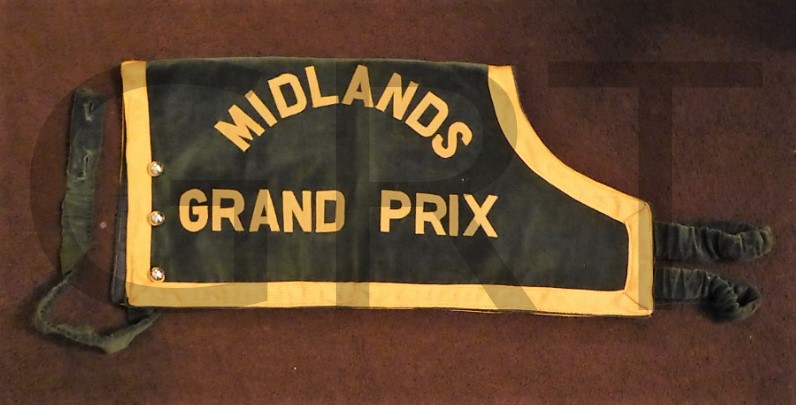
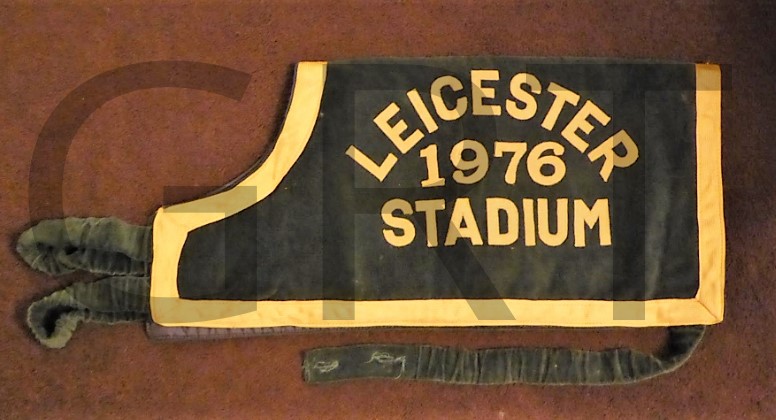
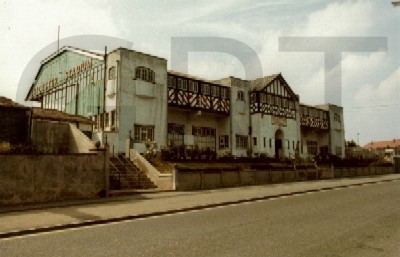
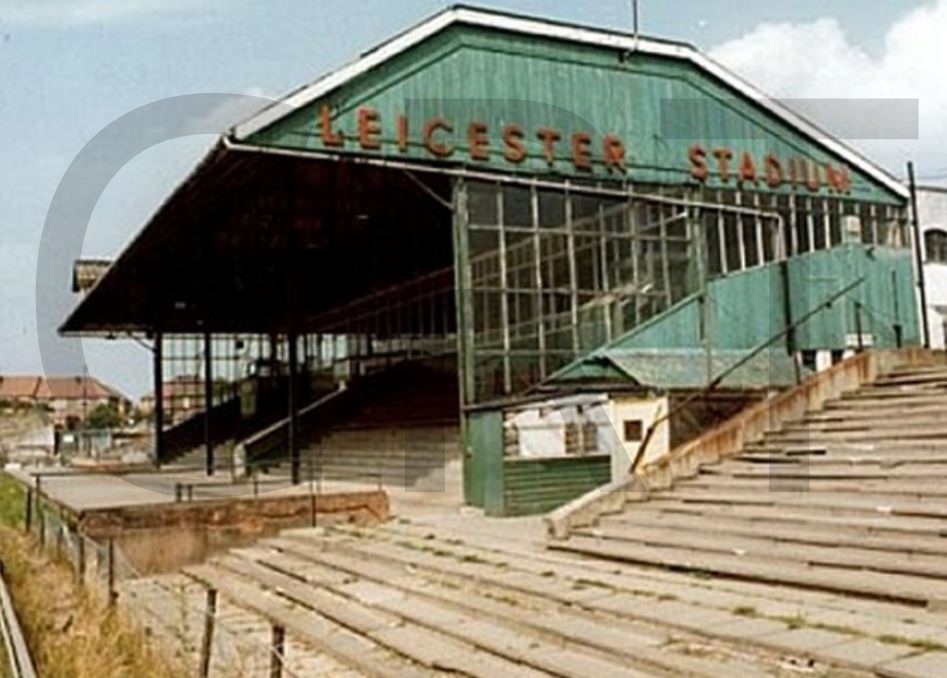


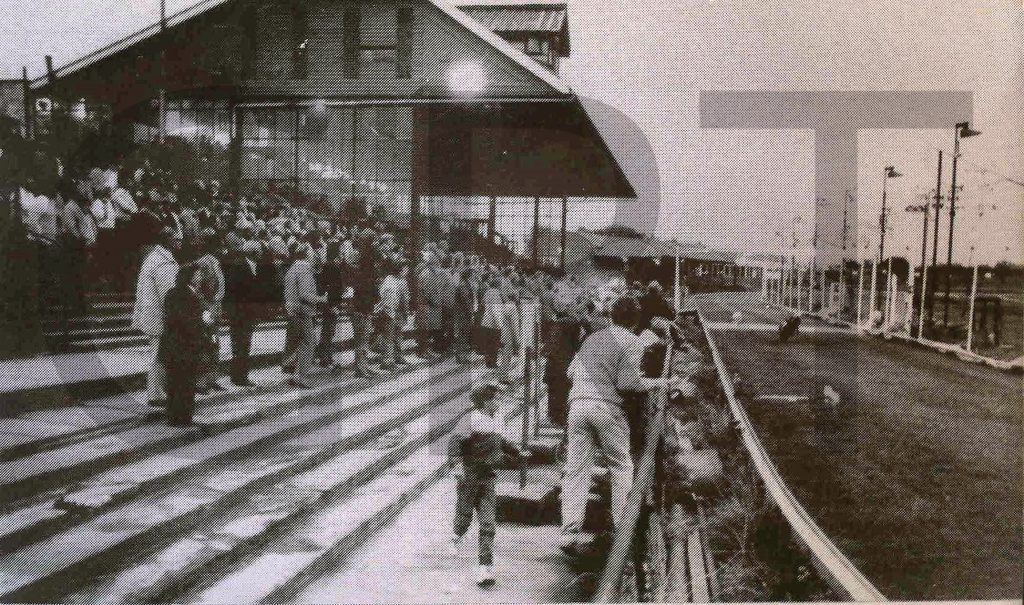



The Leicester Greyhound Stadium, or the Blackbird Road Stadium, as it was also known, was situated at the junction of Parker Drive and Somerset Avenue, in a vicinity located roughly one mile north of Leicester’s city centre. Over the years, the original site had been used as grazing land for livestock and lay adjacent to an ancient monument site known as St Johns Stone.
Construction of the stadium began in late 1927 and took almost six months to complete. Leicester’s opening meeting came on the 26th of May 1928, with a seven-race evening meeting, being run under the newly formed NGRC rules. All greyhounds racing at the track were provided by the greyhound company, and were kennelled within the stadium grounds, although later, open races were sometimes held, which had seen some local owners race their dogs there.
By the following September, the new sport of Dirt Track Speedway had arrived, and would feature spasmodically throughout the stadium’s history. The new stadium looked very impressive from the outside, with the main stand designed with a black and white Tudor look facia, along with bottle green gable ends, and a terracing of flowers that would guide you to the entrance of the main stand.
By the 1950’s the stadium had increased in size, the now glass fronted grandstand lay at the rear of a steep terracing that would encircle the whole circumference of the greyhound track. The new standing area had increased capacity to around 9,000 and offered some of the best viewing points seen at any greyhound track in the UK. Set back at the rear of the north end banking lay a giant tote board, while opposite the main stand lay another covered section of terracing.
The Leicester Stadium had many links with Coventry’s Lythall Greyhound Stadium, becoming known as its sister track due to it being run by the same management team. During its time Leicester Stadium had seen some tragic events, firstly in 1930 when a boy of 11 died, and his brother seriously injured after crawling into the hut which controlled the hare system, and unfortunately become caught up in its mechanism.
Another tragic event hit the headlines during 1942, when a man died, and a woman suffered serious injuries after being shot, in an incident described as a gangland shooting. The hostilities of the Second World War saw little changes, although meetings were switched to daylight hours only, after the introduction of new war time regulations. After hostilities had ceased, Speedway Racing became more of an attraction, producing the best ever attendance seen at the Leicester venue, when over 11,000 witnessed a meeting during 1968. The Speedway teams of Leicester Hunters then Leicester Tigers existed on and off over the years before Speedway ceased in October 1983. Stock Car Racing also featured, the first event coming during April 1955, and raced on the circuit of the Speedway track right up until its closure in August 1984.
Leicester’s big race event on the Greyhound Racing calendar had been The Midland Grand Prix, run annually during May, over a distance of 485 meters. Its other distances were run over 275, 650, 708 and 917 metres, all on a totally grassed running surface, and staged five dog races with the hounds chasing an outside Sumner type hare system. By the early 1980’s Greyhound Racing at Leicester was running at a loss, and not only that, but the stadium also began to show excessive wear and tear. Its fading paintwork and decaying rusty steelwork, along with its crumbling terracing, proved the stadium was in need of a serious cash injection to stem its decline. But it was never going to happen as the owners had accepted an offer from developers during 1983, and, by the end of the year,
Speedway had become its first casualty, but it was another ten months before the Stock Car Racing and Greyhound Racing ceased. The final meeting at the Leicester was on the 15th of September 1984, when a greyhound called Spinning Top won the very last race, in front of best described “Derby Crowd Type Atmosphere”.
By the end of 1984, demolition of the stadium had begun, and it wasn’t long before the site had been transformed into a modern Barrett Home housing estate. Today, houses on Tiptree Close, Danbury Drive, Galleywood Drive and Peldon Close, now cover the site were once the Leicester Greyhound Stadium once thrived.
A programme, photograph or even memorabilia for this track is required for this page, if you can help please contact me.

Recent Comments